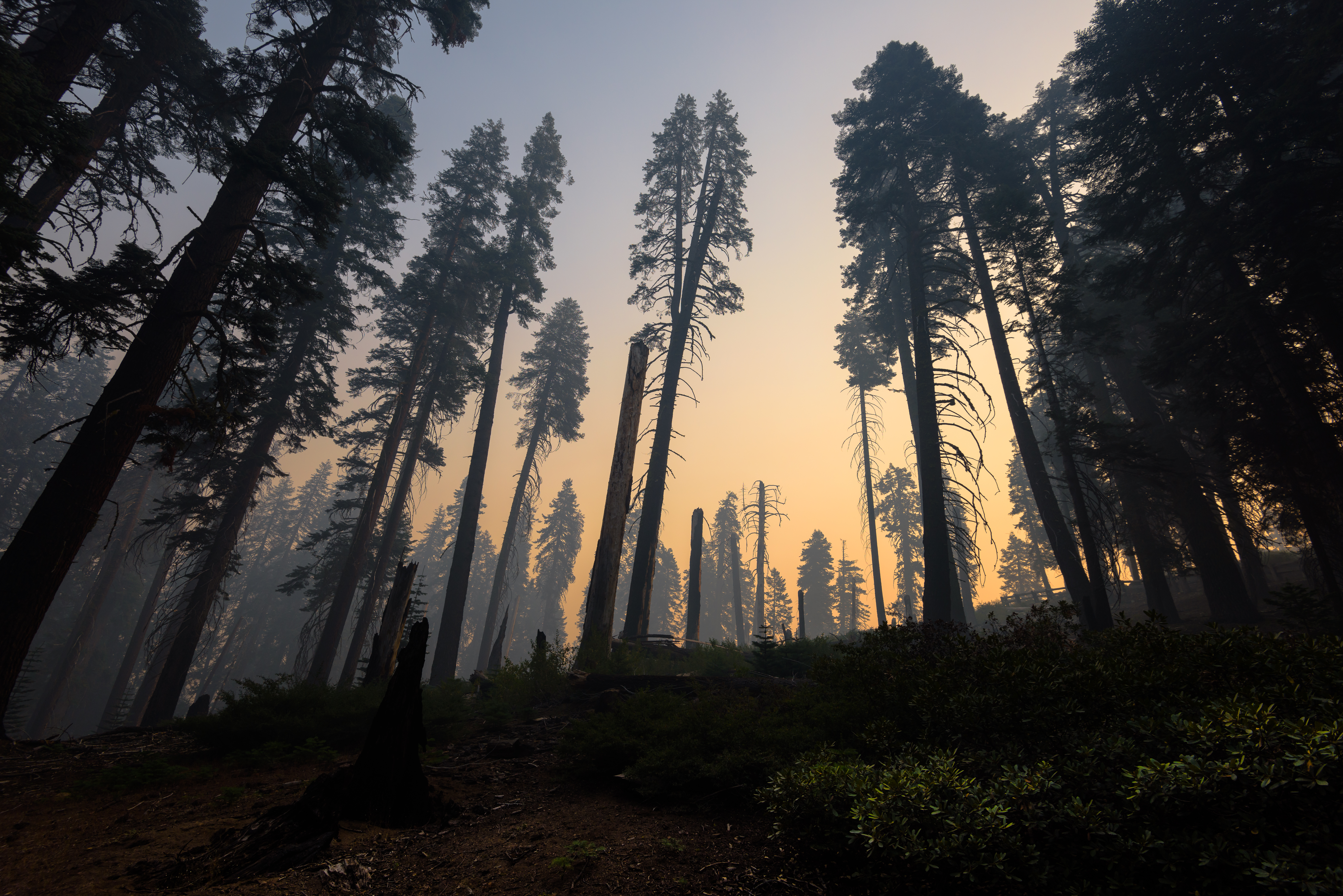How to Fire-Proof Your Home to Withstand a Wildfire

Flames charge toward your home in the middle of the night, giving you and your family only moments to escape the blaze, before your memories are reduced to a pile of ash. This nightmare has become a reality for more Californians in the past few years.
The Golden State has always been prone to fires, but our changing climate is exacerbating the volume and severity of these infernos. Higher-than-average temperatures and a lack of moisture, combined with strong winds from August to November turn the state into a tinderbox.
While the state’s most deadly and destructive blazes traditionally occur in the fall, when the dry Santa Ana winds sweep down from the deserts to the coast, the 2020 season is off to a frightening start. More than 20,200 lightning strikes between Aug. 15 and 19 set the state ablaze with 560+ fires. The world watched in terror as the West Coast infernos gobbled up structures and hundreds of thousands of residents fled their homes in the middle of a global pandemic.
If the worst is still to come, as fire experts predict, what can Californians do? The answer is a lot. There are a number of measures you can take to ‘harden’ your home against a menacing inferno.
Three Ways a Home Can Catch Fire
First off, you should understand how a home can catch fire. Most people think of direct flames as the culprit, but there are actually three ways.
Ember Storm
Embers, small pieces of burning material, can travel more than a mile ahead of a blaze and are responsible for the most damage during a wildfire. Embers create spot fires when they land, causing combustible materials like dry grass and wooden fencing to go up in an instant blaze. Even more dangerously, embers can force themselves into your home through gaps, such as an attic vent or missing shingle, and set fire to the inside.
Radiant Heat
The heat generated from burning trees or adjacent structures can be hot enough to ignite your home without a single direct flame. This radiant heat is especially worrisome in densely populated areas, where the heat from a burning apartment building can catch fire to a house next door.
Direct Flames
Obviously, a direct flame that touches your home can set it ablaze. But, did you know that the flaming front of a wildfire is not typically hot enough to ignite a home? Rather, plants underneath windows that are lit by embers or direct flames can then break the window and allow the inferno to enter your house.
Therefore, with the proper fire safety measures in place, homes in the most wildfire-prone areas can withstand a threatening blaze.
Wildfire Prevention Strategies
Unless you’re equipped with a water truck, hoses and some degree of fire training, it’s often impossible (and incredibly dangerous) for the average homeowner to stop a wildfire that’s charging their property.
Each fire season, we watch some homes survive these blazes, while dwellings next door go up in smoke – the difference lies in homeowner preparation. Here are some prevention strategies:
1. Fireproof Your Roof
Your roof is most vulnerable if a wildfire is looming. Embers tend to land here first, so a roof made of flammable materials can catch fire in seconds, jeopardizing an entire structure. Roofs built out of non-flammable materials, such as asphalt shingles, concrete tiles or clay tiles will give your home a fighting chance in a wildfire. These materials are classified as Class A, the highest rating a material can earn – and the least flammable. If you’re in the market for a new roof and you live in an area where wildfires are a threat, make sure you opt for a Class A material, and a flame won’t be able to spread more than six feet.
Another type of roofing that can help thwart embers is a green roof. It may sound like a roof made of living plants would present a fire hazard, but, when properly designed and maintained, it actually works to mitigate fires. The first green roofs constructed in Germany were initially used as fire prevention systems. Be sure to use plants like sedum and other succulents (no grasses or mosses) and create vegetation-free zones around the vents and periphery. Most green roofs also require irrigation systems and include waterproofing layers with fire-retardant materials – both of which help mitigate fires and reduce a potential spread.
2. Hardscape Your Property and Create a Defensible Space
Once your roof is protected, examine the landscape closest to your house. Does it act as fuel or protection? For the best fire resistance, use hardscaping – gravel, flagstone, steel, and pavers – in the first five feet around your home. A wide concrete driveway acts as a fire barrier to the front of your house, and walkways can create fuel breaks to decrease a fire’s intensity. For landscaping, plant native species that are adapted to your area, as these will retain water better than non-native species. Look for plants with high water content, such as succulents, and make sure to keep your yard free of dead and dry plant material.
Creating a defensible space means reducing combustible materials and eliminating fire hazards on your property to help slow the spread of a wildfire. The buffer you create enables firefighters to save your home with fewer resources and is also crucial for fire crew safety. If a property is deemed too dangerous for firefighters, they will be forced to move on.
The National Fire Protection Association (NFPA) identifies three ignition zones and tactics to help create a defensible space for each:
Immediate Zone (0 to 5 feet)
- Clear roofs and gutters of debris and dead leaves
- Move potentially flammable materials away from your home: firewood piles, building materials, items stored beneath decks and porches
- Remove debris from exterior attic vents and install metal mesh screening to reduce embers
- Repair loose window screens and missing shingles or roof tiles
Intermediate Zone (5 to 30 feet)
- Make sure lawns and native grasses are kept below four inches
- Clear vegetation from beneath stationary propane tanks
- Trees and shrubs in this zone should be grouped together in clusters to break up the vegetation continuity
- Space trees to allow 18 feet between crowns; remove vegetation beneath trees
- Prune limbs that are six-to-10 feet from the ground
Extended Zone (30 to 100 feet)
- Remove small conifers that grow between mature trees
- Eliminate vegetation around or near storage sheds and other small structures
- Stay on top of dead plants, trees, and ground debris
- Make sure the trees on your property have sufficient space between canopy tops (at least 12 feet of space for trees closer than 60 feet; six feet of space for trees 60-100 feet away)

3. Air-Seal and Apply Fire-Retardant Coating
After you’ve removed potentially flammable materials around your home, it’s time to think about smoke. Air-sealing is the process of filling in cracks, gaps, and other small spaces that allow air to meander indoors from outside. Not only is air-sealing your home a great way to improve your energy efficiency, but it also helps limit the amount of smoke, and even small embers, that try to creep in during a wildfire.
One of the best ways to air-seal your home is to apply closed-cell spray foam insulation to every wall, floor, and ceiling cavity. Here are a few more tips:
- Caulk and seal any areas where plumbing, ductwork, or electrical wiring enters living areas
- Swap out old windows with double-pane, energy-efficient windows
- Replace door bottoms and thresholds with ones that have pliable sealing gaskets
- Check for leaks around chimneys, furnaces, and gas-fired heating vents
- Seal identified leaks with a fire-resistant material like sheetrock or furnace cement caulk
If you’re having trouble locating air leaks in your home, you can call a professional to conduct an energy audit. Make sure he or she performs a blower door test that depressurizes your home and pinpoints the location of different types of leaks.
Another line of defense is a fire-resistant coating. A thin film, these coatings are designed to expand by 20-to-50 times during a fire, which creates a thermal barrier and prevents your steel frame from collapsing. The best time to apply this type of coating is right after the framing is complete and before the mechanicals are installed – so the fire-resistant coating is most effective if you’re building new or renovating.
Plan to Lose Power
Even if a wildfire doesn’t directly threaten your property, you should still be ready to lose power during California’s fire season. Public Safety Power Shutoffs (PSPS) are becoming more common as electric utilities – mainly PG&E – cut electricity when fire risk is high. Aside from the inconvenience of losing electricity, Californians in rural communities who rely on well water are unable to use sinks, showers, and toilets when the power is out.
As planned power shut-offs become the norm, residents across the state should have access to at least a small generator, if not install an entire off-grid system. Aside from keeping you comfortable, being able to stay connected when the power is off will keep food from spoiling, electronic medical devices functioning, and keep well water on – especially if a fire does erupt, being able to access water is critical.
PACE Financing Can Help You Fire-Proof Your Home
Each year in California, some homes survive wildfires while others go up in smoke – and they may be next door. The difference is the degree to which homeowners are prepared. Some preventative measures, such as clearing vegetation, and air-sealing your home, are easy and inexpensive. Others, such as installing a new roof and hardscaping your property, are pricier. With PACE financing, you can leverage the equity in your home to pay for fire-proofing measures that can help your property become as resilient as possible. Nothing is more costly than losing everything in a wildfire.




